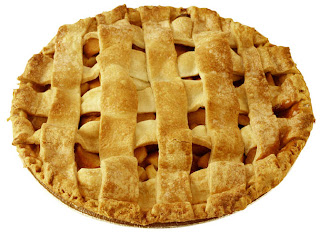Decimal Numbers
A decimal number is any number written with a period in it. We commonly see decimal numbers every time we write dollars and cents. If gasoline is selling for three dollars and 49 cents a gallon, we would write this as a decimal:In this decimal number, the 3 represents the ones place value, 4 represents dimes (or tenths) of a dollar, and the 9 represents pennies (or hundredths) of a dollar.$ 3.49
Place Values
In decimal numbers, the value of a digit depends on its place in the number. Each place has a value of 10 times the place to its right. Each number to the left of the decimal has a value of 10 times less the place to its left. The term decimal comes from Latin. It means 10.Where decimal comes from
 |
| Decahedron |
When you study geometry, you will learn about a shape called a decahedron. It is ten sided. Notice that the sides of a decahedron do not have to be the same shape. It is only necessary that there are ten sides.
If you watched the Summer Olympics in London, you probably saw an event called the Decathlon. There are ten events in the decathlon.
If you have heard of the term decade, then you know that it means ten years.
Base
The decimal numeral system (base ten or denary) has ten as its base. It is the numerical base most widely used by modern civilizations. But it is not the only numbering system. Computers use a sixteen digit numbering system (and a six digit code to represent color). Why 16? Because, at its most basic function, computers are binary. Sometimes you will see code written as 0 or 1. And the binary system of twos can be divided into 16 in more ways than with any smaller number.
The ancient Mayans used 20 as a numbering system (counting all the fingers and toes) Our English ancestors created the fractional system based on twelve. Twelve is a good system because it can be divided by more numbers than 10. That is why in fractions, we can talk of thirds, fourths, and halves.
 |
| a ruler in inches and centimeters |
Notice that on the side opposite inches is a metric measurement. This is how Europeans measure and most of the scientific world.
How tall are you in meters? One meter equals 39.37 inches.
If you want to check your answer go to the foot to meter converter.
Decimal Numbers
Here is a decimal. Can you guess what its value is? Hint, it is about as close to a million as you can get.
999999.999999
In figuring out place value, always start at the decimal.
The value of the number going to the left always increases by a factor of ten (factor means multiple by ten). In our example above, we start with 9, then it successively becomes 90, 900, 9000, 90,000, 900,000.
We almost got to a million, didn't we?
The value of the number going to the left of the decimal decreases by a factor of ten. In our example, we have nine tenths, then nine hundredths, nine thousandths, nine ten thousandths, nine one-hundrend thousandths.
So, do you think you got it????
Question: if I add a million places to the right of the decimal, will I ever reach one? No, because new place values to the right of the decimal only decrease the place value by a factor of ten.
Easy as Pie
It is like we slice the pie in half. Then we slice each half ten times. Then each new piece ten times. Wow, gets pretty small pretty fast, doesn't it?
Speaking of pi, not not what you eat, but the Greek letter that expresses the relationship of the diameter of a circle with the circumference. Did you know that pi is an irrational number. This means that it can not be written exactly as the ratio of two integers. As a fraction, we generally write pi as 22/7 (3.14), but remember this is just an approximation. If you are a scientist trying to send a rocket to the moon, then you need to be more accurate.
The diameter of the earth at the equator is 7,926.41 miles. What do you think the circumference is?
Check your answer here.
Computers have tried to figure out pi as a decimal. They have even gone on to a million decimal places (tenths, hundredths, thousandths, ten thousandths, ..., millionths, etc.), but it is never ending. That is why we call the expression pi irrational.
Here is pi expressed to the millionth decimal place:
3.141592...
Take the Place Value Quiz
Think that you understand what place values are?
Take the quiz.
